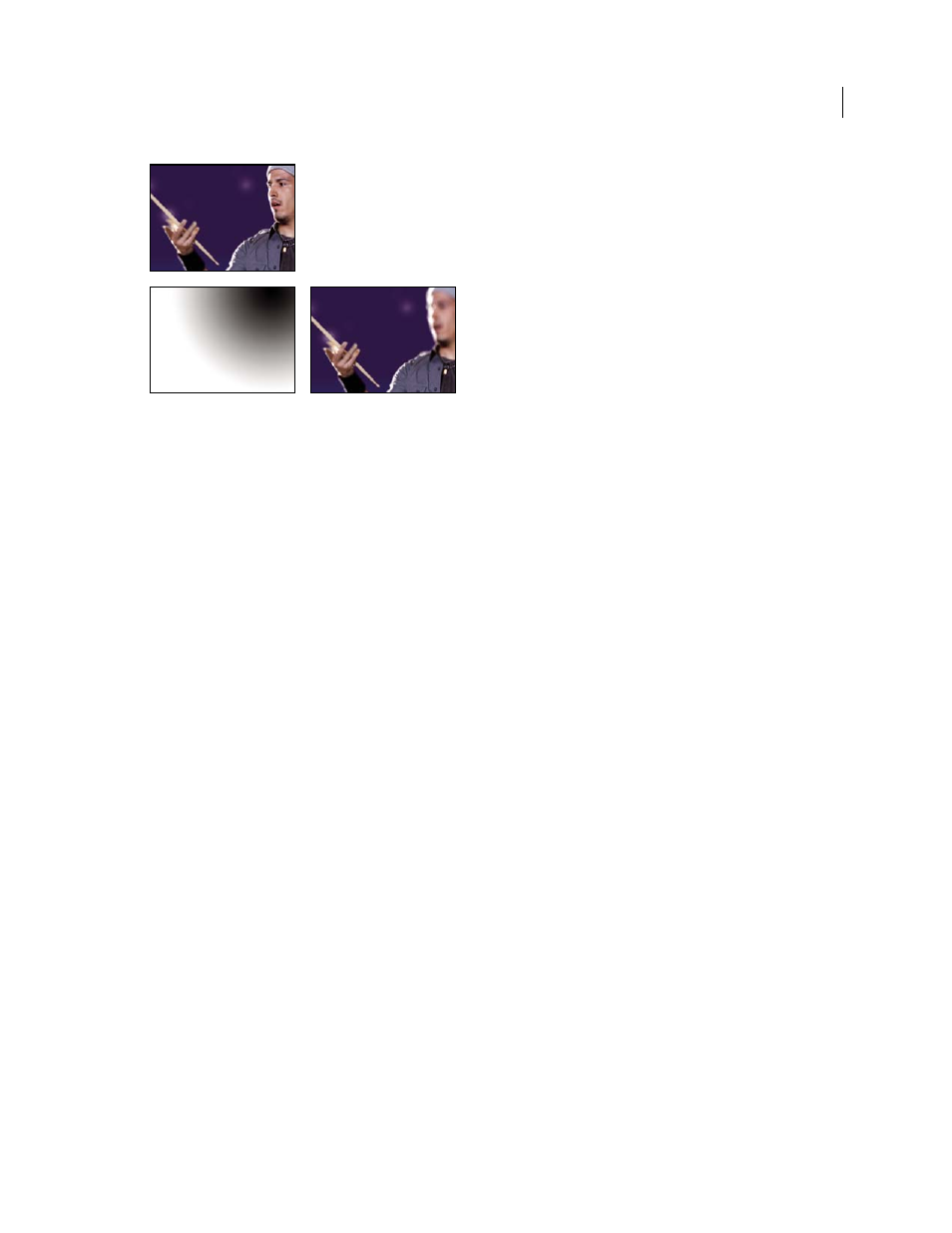Radial blur effect – Adobe After Effects CS4 User Manual
Page 450

444
USING AFTER EFFECTS CS4
Effects and animation presets
Last updated 12/21/2009
Original (upper-left), Depth Map layer (lower-left), and result (lower-right)
Depth Map Layer
The control layer from which the depth map is taken.
Depth Map Channel
The channel of the control layer to use as the depth map. Pixels with low values correspond to low
depth (near the camera); pixels with high values correspond to high depth (far from the camera). Select Invert Depth
Map to invert this relationship.
Blur Focal Distance
Depth of the focal plane, where pixels are in focus.
Iris Shape
The polygon to use as the iris shape.
Iris Blade Curvature
The roundness of the edges of the iris.
Iris Rotation
The rotation of the iris.
Iris Radius
The size of the iris. Increase this value for greater blur.
Specular Threshold
All pixels with a brightness value greater than Specular Threshold are treated as specular
highlights.
Specular Brightness
Brightness of specular highlights.
Noise controls
Film grain and noise are removed when you blur an image. To make the image look more realistic, you
may want to add noise back to the image so that it doesn’t look retouched. To add noise, set Noise Amount, and choose
a noise type from the Noise Distribution menu. To add noise without affecting the color in your image, choose
Monochromatic Noise.
Stretch Map To Fit
Stretches the control layer to the dimensions of the layer to which it is applied; otherwise, the
control layer is centered on the affected layer.
More Help topics
Radial Blur effect
The Radial Blur effect creates blurs around a point, simulating the result of a zooming or rotating camera.
You can specify the level of anti-aliasing applied at Best quality; no anti-aliasing is applied at Draft quality. At Draft
quality, the blur appears somewhat grainy. You may prefer the draft results for special effects, but the grain may flicker
on interlaced displays.
This effect works with 8-bpc, 16-bpc, and 32-bpc color.
